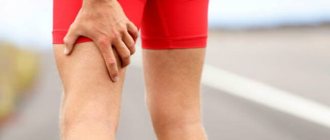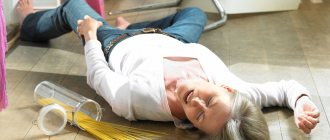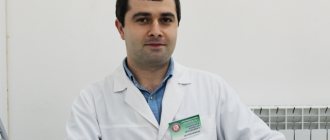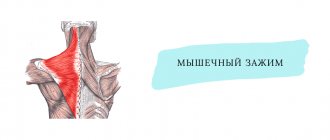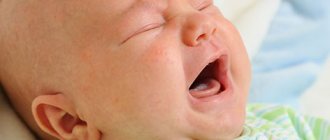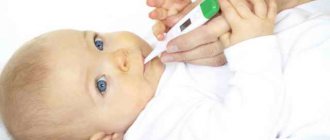Reception is conducted by:
Cramps are sudden, involuntary attacks of muscle contractions, often accompanied by loss of consciousness. The appearance of seizures is an indication to immediately call an ambulance.
The causes of seizures can be different:
- infections - meningitis, encephalitis, brain abscess;
- metabolic disorders - decreased levels of calcium, potassium, magnesium;
- high body temperature;
- epilepsy;
- brain tumors.
Let's consider providing emergency care for the most common convulsive conditions in children: epileptic seizures, convulsions due to a rise in temperature and convulsions that occur when a child cries.
Epileptic seizure
Epilepsy is a chronic disease accompanied by disorders of consciousness and seizures.
a few hours or days before the onset of seizures, you may notice motor restlessness, labile mood, increased irritability, and sleep disturbances in the child.
The attack classically begins in a child with a cry (initial cry), followed by loss of consciousness (often to coma) and convulsions. The first phase of convulsions in children lasts 10-20 s and is characterized by tension in the facial muscles and extensors of the limbs; muscles of the body, the jaws are tightly clenched, the eyeballs deviate upward and to the side. The complexion is pale at first and later becomes reddish-cyanotic. The pupils are wide. There is no breathing. The second phase lasts from 30 seconds to several minutes and is manifested by short contractions of various muscle groups of the body. In both phases of the convulsive syndrome, biting of the tongue and lips may occur.
Subsequently, the child’s convulsions gradually decrease, the muscles relax, breathing is restored, the patient is motionless, and urine and feces often pass. After 15-30 minutes, sleep sets in or the child regains consciousness, completely forgetting the seizure.
How to help a child with seizures
- Place the patient on a flat surface (the floor) and place a pillow or cushion under the head; turn your head to the side and provide access to fresh air.
- Restore airway patency: clear the oral cavity of mucus, insert a small and fairly soft object between the teeth to prevent biting the tongue, lips and damage to the teeth. It is best to tie the edge of a towel or scarf (any other fabric) into a knot and place this knot between the teeth. Using hard objects (such as a spoon) for this purpose can result in broken teeth.
- Hospitalization after emergency care in a hospital with a neurological department. In the future, selection or correction of epilepsy therapy is necessary.
Diagnostics
Scope of required examination
a child with seizures is determined by the doctor individually, it depends on the nature, conditions of occurrence, and frequency of seizures; the general condition of the patient, the characteristics of his somatic and neurological status and may include an EEG, if necessary, EEG video monitoring, CT or MRI of the brain, lumbar puncture, biochemical studies of blood, cerebrospinal fluid, urine, etc. The purpose of the studies is to identify the possible cause of seizures and Establishing a diagnosis, allowing us to formulate the correct approaches to treating the child.
Convulsive episodes in newborns and young children are in most cases isolated and do not require further treatment. Recurrent seizures, most often associated with various types of epilepsy, require carefully selected and long-term therapy with anticonvulsants under the supervision of a pediatric neurologist (epileptologist).
Convulsions in children at high temperatures
Convulsions in children occur when body temperature rises above 38 ºС during an infectious disease (acute respiratory diseases, influenza, otitis media, pneumonia, etc.).
What is typical for seizures due to fever?
Usually observed at a height of temperature and stop when it drops, they do not last long - from several seconds to several minutes; in addition, the child may lose consciousness.
How to help a child with seizures
- Lay the patient down, turn his head to the side, provide access to fresh air; restore breathing: clear the mouth and throat of mucus.
- Carry out antipyretic measures. If the child has a pronounced fever, that is, the skin is hot to the touch and has a reddish tint, then you can use:
- blowing with a fan (with caution);
- a cool, wet bandage on the forehead;
- cold on the area of large vessels (armpits, groin area);
- carry out wiping - 40% alcohol, 9% (!) table vinegar, water mixed in equal volumes (1:1:1). You can simply use alcohol with water or 9% vinegar with water in equal parts. Wipe with a cotton swab soaked in this solution (except for the face, nipples, genitals), then allow the child to dry; repeat 2-3 times.
Take paracetamol (acetaminophen, Panadol, Calpol) at a dose of 10-15 mg/kg of the child’s weight at a time or ibuprofen 5-10 mg/kg of weight (for children over 1 year old).
If a child has a background of elevated temperature: pale skin, a bluish tint to the lips and nails, cold palms and feet, chills, then wiping and other cooling measures cannot be carried out. It is necessary to warm the child and, against the background of antipyretic therapy, give no-shpa or papaverine at a dose of 1 mg/kg body weight orally (to dilate blood vessels).
An ambulance needs to be called.
Children with febrile seizures
During my 10 years of practice as a pediatric neurologist, I often encountered children with episodes of seizures in response to elevated body temperature, so-called febrile seizures.
Febrile seizures are seizures that usually occur in children under 6 years of age against the background of a sharp increase in body temperature from 38 ° C and above.
Febrile seizures are quite rare in children. But working as a consultant in the somatic department of a children's hospital, I came across them quite often - from time to time several patients had exactly this diagnosis.
Why do children have seizures?
Unfortunately, it is impossible to know whether a child has this predisposition or not until the problem manifests itself. When a baby is sick and feels bad, the mother is usually lost and doesn’t know what to do. Some people cannot even detect the presence of seizures, which is very important. After all, timely diagnosis and emergency care will preserve the child’s health and help avoid unpleasant consequences. Therefore, first of all, I try to explain to the mother how to behave if seizures recur, and how to avoid them in the future.
Most often, febrile seizures occur in infants between 6 and 18 months of age. During this period, the child’s nervous system is most vulnerable. It is also worth noting that the reason why the temperature rose, be it ARVI, intestinal infection, reaction to vaccination or heat stroke, is not important; only the febrile temperature itself is important for the occurrence of seizures.
Febrile seizures in children are visually very similar to seizures in epilepsy. However, unlike episyndrome, an attack occurs only against a background of high temperature and lasts less than 15 minutes.
Signs and diagnosis of the disease
When the attack begins, the child turns pale, the skin becomes bluish and may become cold to the touch. Febrile seizures in children are accompanied by loss of consciousness. His body is tense due to excessive muscle tension, his head is thrown back, then rhythmic twitching of the limbs, sometimes the whole body, is added. Often the attack lasts from 3 to 7 minutes. After the attack, the child wakes up, consciousness gradually returns, all muscles relax, and the baby seems to go limp. To complete the attack, an act of involuntary urination and defecation occurs. Skin color is normalized.
In addition to standard tests, I prescribe a clinical and biochemical blood test and a clinical urine test. I also sometimes prescribe a blood test for electrolytes for the child. Sometimes cramps during fever in a child can occur due to electrolyte imbalance.
An experienced pediatrician can already make a diagnosis based on the collected data from clinical tests, assessment of the child’s physical condition and psychomotor development. But the child must be shown to a neurologist, because such children often have certain disturbances in the functioning of the nervous system.
Treatment of pathology
The main complex of drug treatment, in addition to treating the cause of the disease, is aimed at reducing the temperature to low-grade levels (37.5 ° C). Young patients are prescribed drugs that lower body temperature (antipyretics): paracetamol in rectal suppositories, Ibuprofen in syrup. I advise mothers to always have these drugs in their home medicine cabinet.
Particular attention should be paid to physical methods of cooling: you can apply a cool compress to the forehead and main vessels (neck - carotid artery, thigh - femoral), wipe the child’s body with water or a water-alcohol mixture, and ventilate the room. For such a patient, the optimal position is on the side with the head slightly tilted back. This will avoid aspiration of vomit at the peak of the attack. In a hospital setting, additional oxygenation of inhaled air occurs through a mask.
Prevention measures
If parents already know about the presence of such a feature in their child, then the temperature should not be allowed to rise to febrile levels. It begins to decrease after 37.5-37.8 ° C. Children who have had febrile seizures should be under the supervision of a pediatrician and neurologist at their place of residence. While the pediatrician monitors the general condition and development of the child, the presence of symptoms of somatic diseases, the neurologist’s task is to properly examine the child and exclude pathologies of the central nervous system. As a rule, competent medical supervision can prevent febrile seizures in the future.
Another important task of neurologists, I believe, is communication with the parents of such a patient. They need to correctly and clearly explain the specifics of their situation, what consequences this condition can have for their baby, and most importantly, how to behave correctly and what to do if febrile seizures occur. Now, I hope you will be prepared if you ever run into this problem.
Kabardiev Alimkhan Arslanovich, neurologist.
Symptoms
Tonic spasms manifest themselves as persistent tension in the skeletal muscles. This type occurs most often in patients and is usually local in nature. Tonic spasms occur due to physical activity or disturbances in electrolytic metabolism. They can be of a generalized nature, in this case a clinical picture characteristic of tetanus is observed - the patient’s body is tense and arched, supported by the heels and back of the head, the head is thrown back, the teeth are clenched.
Clonic seizures are involuntary rhythmic muscle tension provoked by the activity of the cerebral cortex. Local clonic convulsions are manifested by twitching of the limbs or facial muscles. Generalized clonic seizures can lead to loss of consciousness and breathing problems.
Tonic-clonic seizures may signal epilepsy. The attack begins with tonic convulsions, followed by generalized clonic ones. Breathing becomes impaired, eyeballs roll back, profuse salivation occurs, and tongue biting is possible. An epileptic seizure is often preceded by an aura - a condition in which the patient experiences warning signs of an attack - involuntary contractions of facial muscles, tinnitus, sensations of flashes in the eyes or unpleasant odors.
Causes of cramps at night
Our phlebologists note several sources that contribute to the occurrence of seizures:
The first source: disruption of normal blood flow in the lower extremities. This is explained by the fact that when blood stagnates in the vessels, the pressure in the veins begins to increase, fluid is released from the vein and spreads to the surrounding tissues. With the fluid, trace elements necessary for natural muscle contraction, such as sodium, calcium and potassium, are released from the blood. The reaction of this is a spontaneous and strong contraction with pain - this is how convulsions occur.
The second reason: the patient suffers from varicose veins. At night, blood flow in the veins slows down, and the body returns to its calm state. And with varicose veins, the process of slowing blood circulation slows down by half. In this regard, the muscles undergo impulse contractions, trying to help the heart push blood through the veins.
The third reason: the ATP mechanism fails. So that at the moment of contraction the muscle can assume a calm state, it is supposed to relax. The body has an element responsible for this action - ATP molecules. If the blood stagnates, the production of ATP is significantly reduced. This means that the ATP mechanism fails.
Treatment
Treatment depends on the etiology of the underlying disease. If convulsions occur only as a result of overexertion and are associated with poor diet and dehydration, then it is necessary to normalize the patient’s diet, adhere to the drinking regime, and possibly prescribe vitamin-mineral complexes.
If tonic convulsions occur during physical activity, it is recommended to rub the spasmodic muscles and take other measures to neutralize the convulsive state. For example, with cramps in the calf muscles, you need to pull your foot up, this helps reduce the degree of spasm; Sometimes pricking the spasmodic area with a sharp object helps.
Drug therapy for seizures includes the prescription of anticonvulsants (carbamazepine, velproate, phenytoin) and sedatives (phenobarbital, benzobarbital, primidone).
The reception is conducted by specialists
Tagirov Akram Karamovich
neurologist, reflexologist
Prevention of night cramps
To limit yourself from experiencing night cramps, our phlebologists recommend:
- add vitamins such as calcium and magnesium to your menu;
- consume dairy products;
- eliminate smoking;
- choose the right shoes - provide low heels;
- avoid excessive stress on the lower limbs;
- Consume caffeine and strong tea in small quantities.
Contrast baths before bedtime have a positive effect as a preventive measure against cramps, helping to naturally strengthen the walls of the veins.
